The Da Vishy Code
Anand has been playing chess for four decades now, out of which, he has stayed at the absolute top of the world for more than two decades. Vishy learnt the rules of our game at the age of six, and today he turns forty-six. For Anand, it has been a journey from being labeled with adjectives to himself becoming one. Countless articles, interviews and shows have documented his story. ChessBase India brings you a selection of pictures from Anand’s early career and his recent resurgence, with games and more. A heartfelt tribute to the man who put India on the world chess map.
The Da Vishy Code: A tribute to Vishy Anand
An adjective is a word that is used to describe a noun. In a recent video, Vishy’s colleagues at the London Chess Classic were asked to describe him in a couple of words. Legend, ageless, solid, wise, a genius, and a difficult opponent. For Anand, it has been a journey from being labelled with adjectives to himself becoming one.
Anand has been playing chess for four decades now, out of which, he has stayed at the absolute top of the world for more than two decades. He learnt the rules of our game at the age of six, and today he turns forty-six. Vishy’s towering career has spanned longer than many of the current chess players have lived! Yet, despite being the oldest player in the block, he continues to be amongst the best in the world, and he has been the best for the past two decades.
Things would have been very different for India had Vishy not trailed a blaze, becoming the country’s first grandmaster, and then the world champion. His forty years of chess has awakened a generation of young chessplayers to take up this sport seriously. Vishy Anand is a colossal talent we have been lucky to witness in action. Yet every tiger was once a cub...

Anand was around six years old when his mother Susheela Viswanathan taught him the rules of our game. Chess captured the little boy’s imagination and the cub began to sharpen his claws, the claws which one day would make the strongest players in the world run for cover.
Some years later, in 1978, K. Viswanthahan, who was the chief mechanical engineer at India’s Southern Railways, was posted in Manila in the Philippines, and consequently, he moved there with his family. Anand’s mother was adamant that Anand maintained his sporting life there too, which made her take little Anand to tennis and chess camps.
Due to the 1978 World Championships, the Philippines were witnessing an unprecedented chess boom. Motivated by the flurry of chess activities in the Philippines, a chess lover by the name Florencio Campomanes began producing Chess Today, a TV show based on chess which would be aired from 1 to 2 in the afternoon. Florencio Campomanes, or Campo as he was known to the chess world, went on to become the FIDE President from 1982 to 1995.
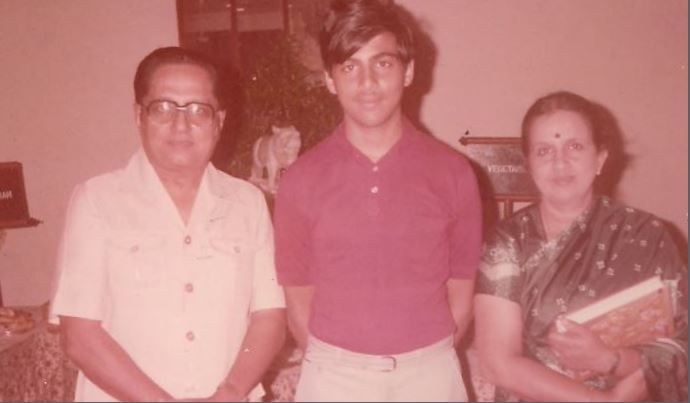
Young Anand was a fan of the TV show Chess Today. The problem was he used to attend school at the time when the show was aired. Not to let this hamper her child’s progress, Anand’s mother made sure to watch the programme herself and maintain the score of the game discussed on the show every day. In addition to the game, at the end of every episode, there would be a puzzle to be solved by the viewers and be sent to the TV station. Usually it used to be endgame positions, and there was a prize for the correct answer.
Anand’s mother noted every position down, at times even managing to tape the episodes. As soon as Anand returned from school he would complete his homework and be ready to savour his daily dose of chess. He would use a small chess board, the only size he had, and go through the games, studying the moves, with his mother explaining the notes. His favourite pastime was, of course, the puzzle, which he would solve with utmost interest. Those were the days when the idea of analysing hundreds of positions on your computer screen simply did not exist and everything had to be done on your own on a real chess board. The charm of the game was to get the answer right, without any outside support!
Anand used to solve these puzzles daily, and his mother would mail the answer to the TV station. This routine made Anand go from a talented young boy to the feared tactician he became. The cub was learning to hunt! The winner on Campomanes’ TV show would be the one who got all the details correct, and his/her name would be announced in the very next episode and he/she would be given a chess book as a prize. Anand built up a sizeable collection of chess books in this manner. He won so regularly that the TV station were fed up with him: they called Anand to their library and asked him to pick up whatever book he wanted, but to stop sending the answers so that others could get a chance!
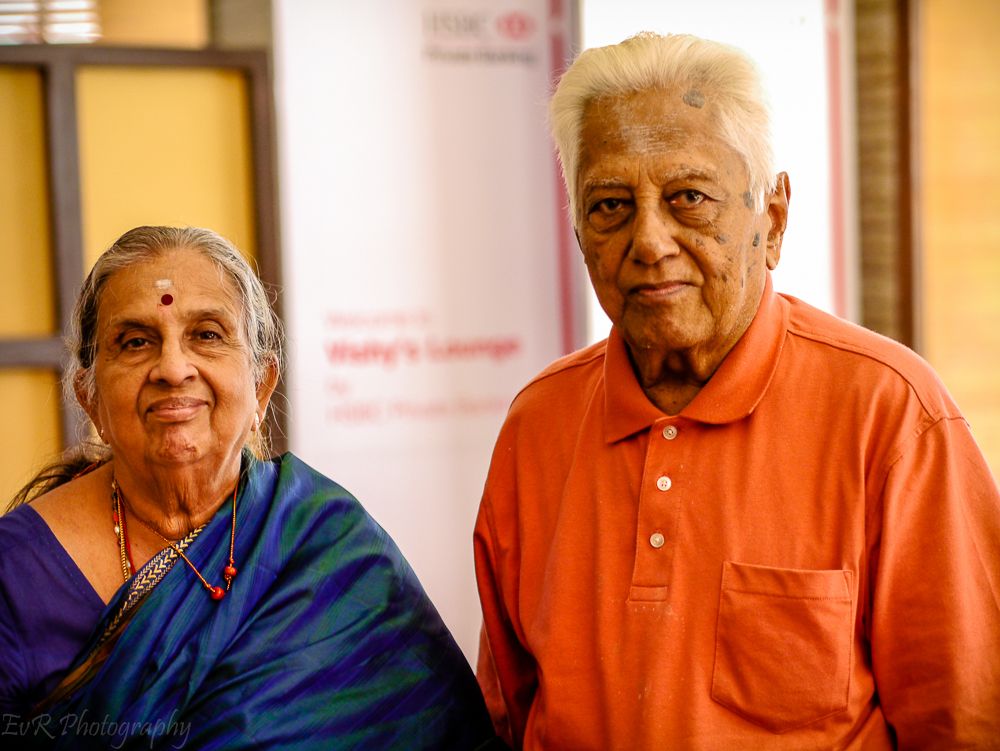

Don Bosco is built on the ethos of nourishment of the youth. The school, to this date, believes in the importance of sports and games in the development of a student. Anand was a product of this school.

Tamil Nadu was basically hailed as a seat of learning in chess, and there were tournaments all around the state. To this date, it remains the central chess province of India. Over the years, Anand competed in many of those tourneys, developing his skills as a player. These events were frequented by players like Indian stalwarts Arun Vaidya, Pravin Thipsay, Raja Ravishekhar and other strong players. Anand watched these Indian greats play and soaked in every bit of experience.
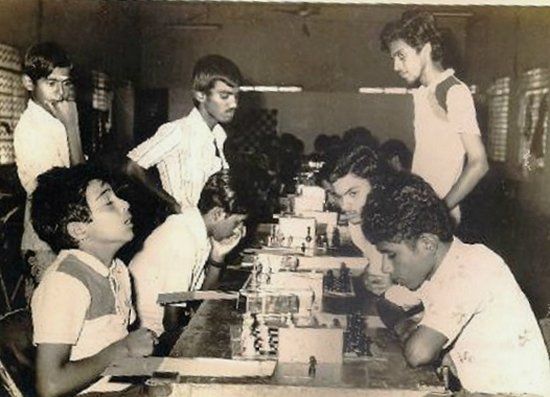
The chess books played a crucial role in Anand’s development as a chess player. There were no computers to prepare in that age and Anand relied heavily on these books to improve his chess. He used to read books like 1001 Opening Miniatures, Opening Traps and Swindles, how to avoid them and other books of a similar vein, which could help him make a quick buck or two! He admitted that he, at least at that stage of development, didn’t get into heavy stuff like Nimzowitsch!

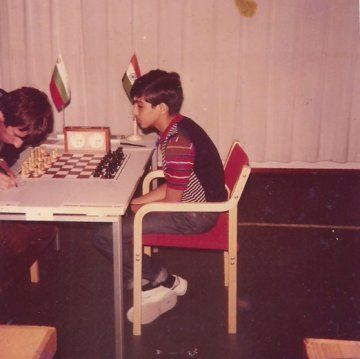

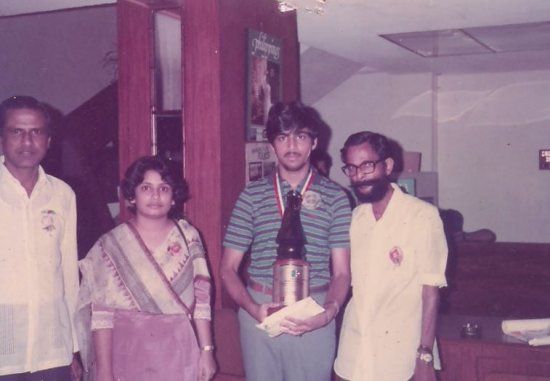
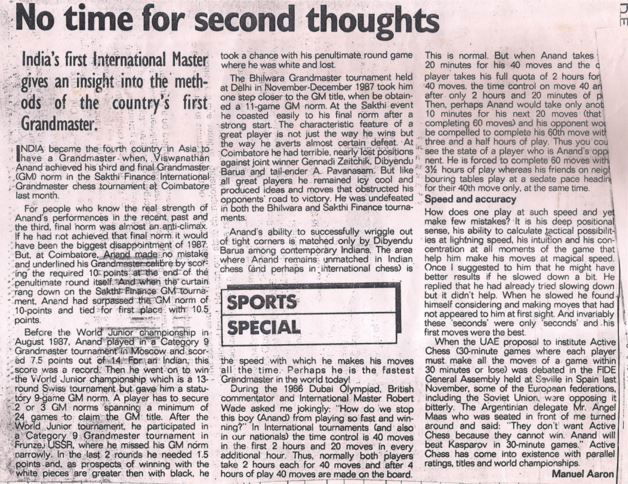
Excerpts: During the 1986 Dubai Olympiad, Britsh IM Robert Wads jokingly asked me: "How do we stop this boy from playing so fast and winning?"
Normally, both players take two hours each for forty moves, and after four hours of play forty moves are made on the board. However, when Anand takes twenty minutes for his forty moves and his opponent takes the full quote for his forty moves, they reach the time control within two and a half hours of play, unlike four which is normal! Then, the next time control is to make twenty moves in one hour. Anand would take perhaps ten minutes to make those twenty moves to reach the second time control, while his opponent may take the full quota of one hour to reach the sixtieth move.
Thus, you can see the state of Anand's opponent. They are forced to complete sixty moves in three and a half hours while their friends in the neighbouring boards would still have not reached the first time control at move forty! Welcome to Anandland.
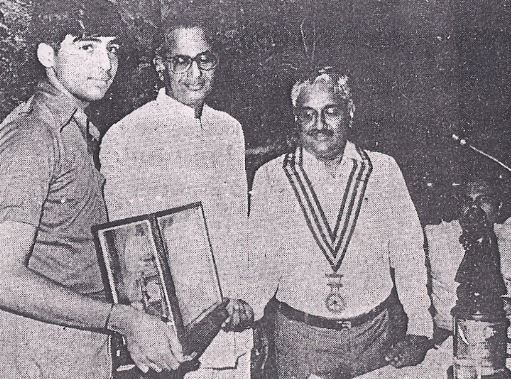

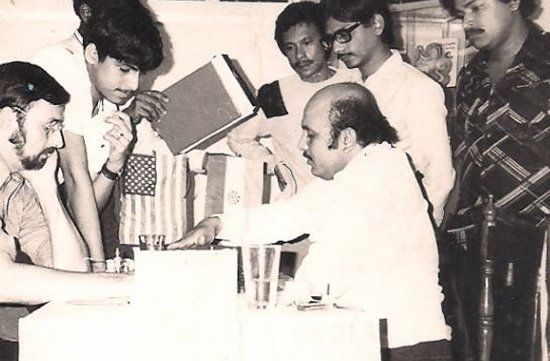

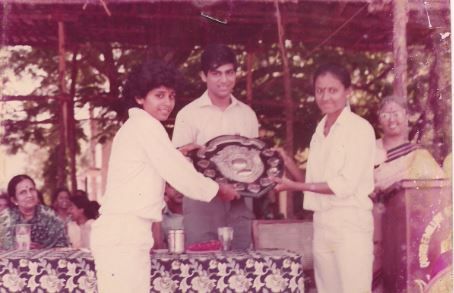
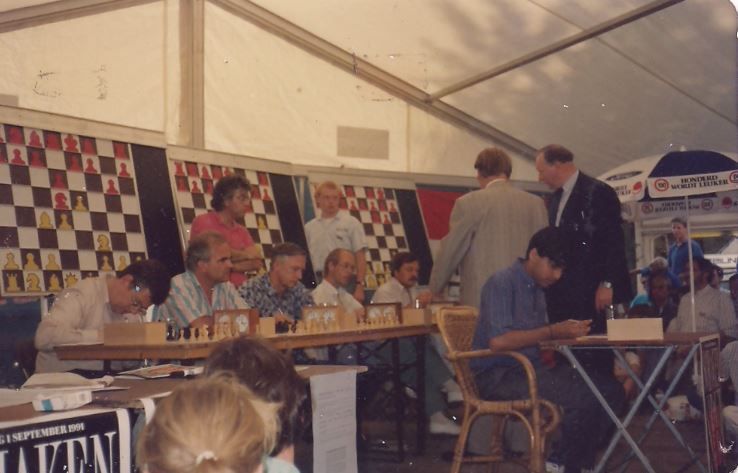
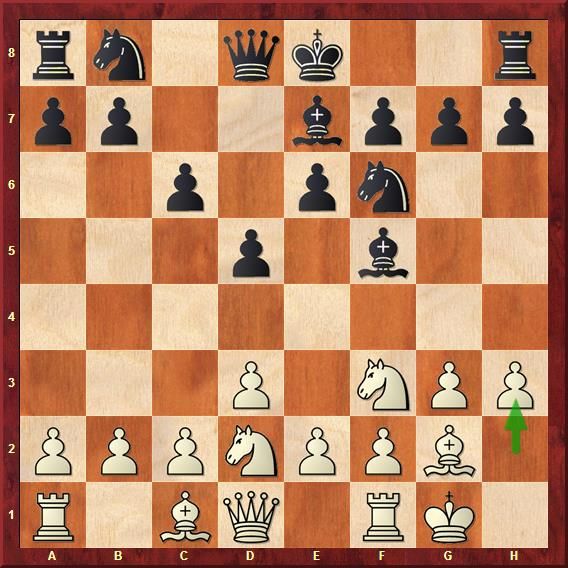
Krabbé, for the lack of any explanation, presumed it to be from the 'grandmaster' world. Until after the game, when Anand explained it. Both Krabbé and the guy next to him had played the same New Yorker system, but one of them had his bishop on g4, and the other on f5. So, he played 7.h3 on both the boards, just to 'see' which bishop is where!
It is remarkable how Anand continuously takes care to improve his pieces. He again and again puts them on their best squares, like a skilful manager who assigns jobs which best suit the environment and abilities of his employees.
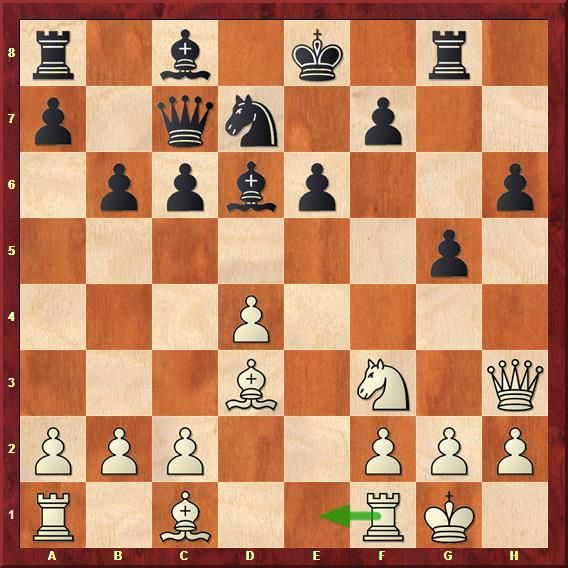
Anand, who was black in the following position, suddenly realised that he would be close to losing if White plays Re1! Luckily for him, Ponomariov did not see the idea and instead played Nd2. A year later, Anand was sitting on the white side of the same position against Viktor Bologan, who was Ponomariov's second!
Of course, he gleefully played 14. Re1, a move which won the 'Best Novelty Prize', and its follow-up idea, which won him the 'Best Game Prize' of the Chess Informant 88.

In a 2005 interview to the Deccan Herald, Vishy explained it thus: "In Dortmund 2003, after my loss to Viktor Bologan in the first half of the event, I had been waiting to play him in the second half. Seeing that he played the Caro-Kann defence in most of his games, I thought it was the best time to pull out this ace. Actually, the move occurred to me during my match against Ruslan Ponomariov (Mainz 2002, Anand won 4.5-3.5). In the first game, at one point, I was so lost and thought if Ponomariov played that rook to e1, I would have to resign. Luckily, he played the knight to d2. I held my breath! I came home, checked this move and found no defence. Bologan was Ponomariov’s second, and I knew they must have worked a good deal on this. So he was the perfect person to wheel out this novelty against."
A few moves after the novelty, the following position arose:

Analysis by GM Peter Lukacs:
[Site "Dortmund"]
[Date "2003.08.07"]
[Round "7"]
[White "Anand, Viswanathan"]
[Black "Bologan, Viktor"]
[Result "1-0"]
[ECO "B17"]
[WhiteElo "2774"]
[BlackElo "2650"]
[Annotator "Lukacs"]
[PlyCount "71"]
[EventDate "2003.07.31"]
[EventType "tourn"]
[EventRounds "10"]
[EventCountry "GER"]
[EventCategory "18"]
[Source "ChessBase"]
[SourceDate "2003.11.11"]
Qe2 h6 9. Ne4 Nxe4 10. Qxe4 Qc7 11. O-O b6 12. Qg4 g5 13. Qh3 Rg8 14. Re1 $1 {
[#] This phantastic idea is connected with a series of sacrifices against the
K in the middle.} (14. Nd2 {- Moreno Carnero-Galkin, EU-ch 2nd Ohrid 2001}) ({
The P on h6 is taboo:} 14. Qxh6 $4 Bf8 15. Qh7 Nf6 16. Qh3 g4 $19) (14. Bh7 $6
{leads nowhere after} {However Black can try to fight for more, for example:}
g4 $5 (14... Rh8 {and the B has to go back.} 15. Bd3 (15. Qxh6 $2 Bf8 16. Qh3
g4 $19) 15... Rg8 $11) 15. Qxh6 Bf8 $5 (15... Rh8 $2 16. Ng5 $18) 16. Qh4 (16.
Bf4 $5 Qd8 $1 (16... Bxh6 17. Bxc7 Rg7 18. Be4 gxf3 19. Bxc6 $16)) 16... Rh8
17. Re1 (17. Ng5 Nf6 $17) 17... Be7 $1 (17... gxf3 $2 18. Rxe6+ $1 $18) (17...
Rxh7 18. Qxh7 gxf3 19. Rxe6+ $1 fxe6 20. Qg6+ Kd8 21. Bg5+ Nf6 22. Bxf6+ Be7
23. Qg8+ Kd7 24. Qf7 Qd6 25. c4 $1 fxg2 26. c5 $1 $18 {P.Blatny}) 18. Rxe6 (18.
Ng5 Nf8 $17) 18... Nf8 $17 (18... fxe6 $4 19. Bg6+)) 14... Bf8 (14... g4 15.
Qxh6 $1 gxf3 16. Rxe6+ $1 {[#] is the first one!} fxe6 (16... Be7 17. Rxe7+ $1
Kxe7 18. Bf4 Rxg2+ 19. Kh1 $18) 17. Qxe6+ Be7 (17... Kf8 18. Bh6+ Rg7 19. Bg6
Nf6 20. Qxf6+ Kg8 21. Bxg7 Qxg7 22. Qxd6 Bf5 $1 23. Qxc6 Rd8 24. Qxf3 Qxg6 25.
c3 $16) 18. Qxg8+ Nf8 19. Bg6+ Kd7 (19... Kd8 20. Bg5 $1) 20. Bf5+ Ke8 {[#]}
21. Bh6 $3 {This brilliant idea is the point!} Qd6 (21... Bxf5 22. Re1 Kd7 23.
Rxe7+ $1 Kxe7 24. Qg7+ $18 {winnimng back everything.}) 22. Bxf8 Bxf8 23. Re1+
Kd8 24. Qf7 Be7 25. Bxc8 Rxc8 26. Qxf3 $16 {Anand}) (14... Bb7 $2 {is met by
the similar sacrifice:} 15. Rxe6+ $1 fxe6 16. Qxe6+ Kf8 17. Qxh6+ Rg7 18. Bc4
$18 {Kovalev-Ushenina, Alushta 2003}) 15. Qf5 (15. Rxe6+ $1 {was probably even
stronger!} Kd8 (15... fxe6 16. Qxe6+ Kd8 17. Qxg8 $18) 16. Rxh6 $5 (16. Re1 $2
Ne5 $1 17. Bf5 g4 18. Qh5 Nxf3+ 19. gxf3 Bxf5 (19... gxf3+ 20. Kh1 $16) 20.
Qxf5 Qd7 $1 $13) (16. Re3 Ne5 17. Qg3 Nxd3 18. Rxd3 Qxg3 19. hxg3 Bf5 20. Rc3
Be4 $44) (16. Bh7 {!} Nc5 $1 (16... Rh8 17. Rxh6 Nf6 18. Bxg5 Bxh3 19. Bxf6+
Kd7 (19... Be7 20. Bxh8) 20. Rxh3 $18) (16... Rg7 17. Rxh6 $1 (17. Qxh6 fxe6
18. Bxg5+ Rxg5 19. Qxg5+ Be7 20. Qg8+ Nf8 21. Be4 $14) 17... Nf6 18. Bf5 g4 19.
Qh4 gxf3 20. Rxf6 Rxg2+ 21. Kh1 Bxf5 22. Rxf5+ $18) (16... Nb8 17. Bxg8 Bxe6
18. Qh5 $142 (18. Qg3 Qxg3 19. hxg3 Nd7 20. Bh7 Nf6 21. Bd3 Kc7 $14) 18... Nd7
19. Bxf7 Nf6 20. Bxg5 hxg5 21. Qh8 Qxf7 22. Nxg5 Qg8 23. Nxe6+ $16) (16... Nf6
17. Rxf6 $1 Bxh3 18. Bxg8 Be6 19. Bxf7 $1 Bg7 (19... Bxf7 20. Ne5 $18) 20. Rxe6
Qxf7 21. Rxc6 $16) 17. Bxg8 Bxe6 18. Qg3 Qxg3 19. hxg3 Ne4 $1 20. Bh7 Nf6 $14 {
Anand}) 16... Ne5 (16... Nf6 $5 17. Bf5 g4 18. Qh4 Bxh6 $1 (18... gxf3 19. Rxf6
) 19. Qxf6+ Qe7 20. Qxc6 gxf3 21. Qd5+ Ke8 22. Bxh6 Rxg2+ 23. Kh1 Bb7 24. Qb5+
Kd8 25. Bf4 Rxf2 26. Bg5 $18) 17. Qg3 Nxf3+ 18. Qxf3 Bxh6 19. Qf6+ Qe7 20. Qxc6
$16) 15... Bg7 (15... Rg6 16. Bd2 (16. h4 Be7) 16... Bb7 17. c4 Rf6 18. Qh7
O-O-O 19. Ne5 $16) 16. h4 $1 Kf8 (16... Nf6 17. hxg5 hxg5 18. Bxg5 $16) 17. Qh3
(17. Rxe6 {is now not so effective in view of} Nc5 $1 {Anand} (17... Nb8 18.
Bc4 $16) (17... Nf6 18. Qe5 $1 $16) 18. dxc5 Bxe6 19. Qe4 Bd5 20. Qg4 Re8 21.
hxg5 Bxf3 22. Qxf3 hxg5 23. Be3 Rh8 $15) 17... Rh8 $1 18. hxg5 (18. Bd2 Bf6 (
18... Nf6 19. Ne5)) 18... hxg5 19. Qg4 c5 20. Bxg5 $1 (20. Qxg5 Bb7 21. Bf4 Qd8
22. Qg3 (22. Bd6+ Kg8 23. Be7 Qe8) 22... cxd4 23. Bd6+ Kg8 24. Be4 Bxe4 25.
Rxe4 $14) 20... cxd4 21. Rad1 $3 (21. Rxe6 {is again premature:} Nc5 (21... Ne5
22. Nxe5 Bxe6 23. Qf3 Bxe5 24. Qxa8+ Kg7 25. Qf3 Bh2+ 26. Kf1 Qe5 $13) 22. Re7
$1 (22. Be7+ Kg8 $1 $17 (22... Qxe7 $2 23. Qxg7+)) 22... Bxg4 23. Rxc7 Nxd3 24.
Be7+ $14) (21. Be7+ Kg8 $13 22. Be4 Rb8 $13) 21... Bb7 $2 {[#]} (21... Nc5 22.
Bf4 e5 (22... Qe7 23. Qg3) 23. Qxg7+ Kxg7 24. Bxe5+ $16) (21... a5 $142 {
which is very difficult to find in a practical game.} 22. Bb5 $1 (22. Rxe6 Ne5
$1 (22... Nc5 23. Re7 Bxg4 24. Rxc7 Bxf3 25. Be7+ Kg8 26. gxf3 Nxd3 27. Rxd3
$14) 23. Nxe5 (23. Be7+ Qxe7 $1) 23... Bxe6 24. Qf3 Bxe5 25. Qxa8+ Kg7 26. Qe4
Bh2+ 27. Kf1 $14) (22. Nxd4 Qh2+ 23. Kf1 Ne5 24. Qe4 Ra7 $13) 22... Nc5 (22...
e5 23. Be7+ Kg8 24. Qg3 $16) (22... Ne5 23. Nxe5 Bxe5 24. Qe4 Bh2+ 25. Kf1 $16)
23. Bf4 $16) 22. Rxe6 $3 $18 {This time this sacrifice destroys Black's
defensive walls.} fxe6 (22... Bxf3 23. Qxf3 Rc8 (23... Qh2+ 24. Kf1 $18) 24.
Re7 Qh2+ 25. Kf1 f6 (25... Ne5 26. Qf5 $18) 26. Bf4 (26. Rxd7 Re8 27. Be4 Qe5
28. R1xd4 Rh1+ 29. Ke2 Qxg5 30. Rd8 $18) 26... Qh1+ 27. Ke2 Qxd1+ 28. Kxd1 Kxe7
29. Bf5 $18) 23. Be7+ $1 Kxe7 24. Qxg7+ Kd6 25. Nxd4 $1 {and the K in the
middle is doomed.} Qc5 (25... Qd8 26. Nxe6 $1 (26. Nb5+ Kc6 27. Be2 $18) 26...
Qh4 (26... Kxe6 27. Bc4+ Kf5 28. Rxd7 $18) 27. Be4+ Bd5 28. Rxd5+ Kxe6 29.
Qxd7+ $18) 26. Bf5 (26. Nb5+ $142 $1 Kc6 27. Be2 $3 Rad8 28. c4 $18 {was even
more beautiful.}) (26. Bb5 $4 Rh1+ $19) 26... Qe5 (26... Bd5 27. Nxe6 Rag8 28.
Qxd7+ Kxd7 29. Nxc5+ Kd6 30. Be4 $16) 27. Nf3+ Qd5 28. Qg3+ Ke7 29. Rxd5 Bxd5
30. Qg5+ Kd6 31. Qf4+ Ke7 32. Be4 {and materially White is winning.} Rh5 (32...
Bxe4 33. Qxe4 Rad8 34. Nd4 Nc5 35. Qe5 $18) 33. Nh4 Rg8 (33... Bxe4 34. Qxe4
Rg8 35. Ng6+ Kf7 36. Nf4 Re5 37. Qb7 $18) 34. Ng6+ Kd8 35. Qf7 Re8 36. Bd3 {
This game belongs to all the books on combination.} 1-0
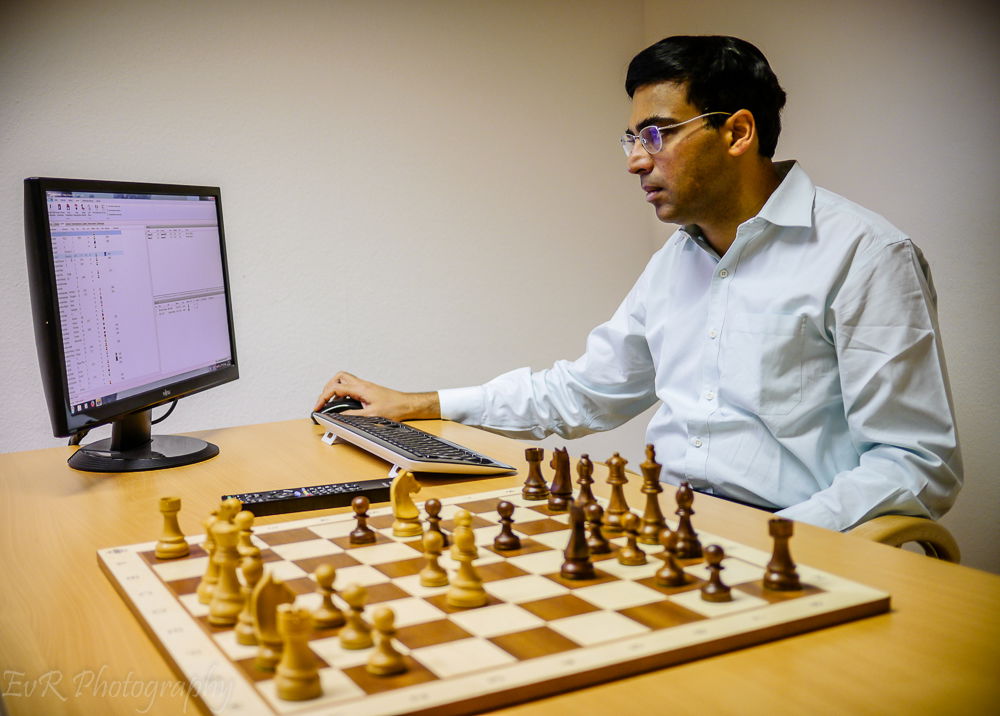

In an interview conducted by the noted journalist Jaideep Unudurti, Anand describes his thought process: "It was found on the board. The funny thing was, when I was analysing, I couldn't remember a thing about it, my analysis. I remember thinking, "Wow, he is charging down this line which is supposed to be good for black". And we got to this position. And he very confidently made the move that I hadn't expected. And I looked for a while, and I have NO move other than Nc7. He has gone Qc3, he is going to take everything. What possible reason could he have? Because Nc7 is the only move, where Black isn't worse. So does he have something? I checked it as long as I could, and I couldn't see it. So I thought: Either I play Nc7 or I resign. So I went Nc7. It was all a bit confusing. I think I even went Nc7 quite fast, by elimination there is nothing else. And then he (Karjakin) looked really surprised."
Analysis by GM Ljubomir Ftacknik:
[Site "Wijk aan Zee"]
[Date "2006.01.14"]
[Round "1"]
[White "Karjakin, Sergey"]
[Black "Anand, Viswanathan"]
[Result "0-1"]
[ECO "B90"]
[WhiteElo "2660"]
[BlackElo "2792"]
[Annotator "Ftacnik,L"]
[SetUp "1"]
[FEN "q3nrk1/4bppp/3p4/r3nPP1/4P2P/NpQ1B3/1P4B1/1K1R3R b - - 0 24"]
[PlyCount "27"]
[EventDate "2006.01.14"]
[EventRounds "13"]
[EventCountry "NED"]
[EventCategory "19"]
[Source "ChessBase"]
[SourceDate "2006.04.04"]
his attack.} 25. Qxc7 (25. Bd2 Ra7 26. Rh3 Rb8 $19) (25. Bb6 Rxa3 26. bxa3 Nb5
27. Qxb3 Nxa3+ $19) 25... Rc8 26. Qxe7 (26. Qb6 Nc4 27. Qxb3 Nxa3+ 28. bxa3
Rxa3 29. Qb2 Rb8 30. Bb6 Ra6 31. e5 Ra1+ 32. Qxa1 Rxb6+ 33. Kc2 Qxg2+ 34. Kc3
dxe5 $19) 26... Nc4 $1 {Excellent position that explains the reason the
black's success. Karjakin is simply lacking the defenders of his king.} 27. g6
(27. Bd4 Rxa3 (27... Qc6 28. Nxc4 Qxc4 29. Bc3 Rca8 30. Kc1 Qe2 $19) 28. bxa3
Nxa3+ 29. Kb2 Nc4+ 30. Kc3 Qa5+ 31. Kd3 Qa2 32. Bc5 Qc2+ 33. Kd4 Qf2+ 34. Kc3
Qxc5 $19) (27. Bc1 Qc6 $19) (27. Bc5 $5 Rxa3 (27... Nxa3+ 28. bxa3 Rxa3 29.
Qxd6 Ra1+ 30. Kb2 Ra2+ 31. Kb1 Rxg2 32. Ba7 Re8 33. Qd7 Ra2 34. g6 Qxe4+ 35.
Qd3 Qxd3+ 36. Rxd3 Rxa7 37. Rxb3 $15) 28. bxa3 Nxa3+ 29. Kc1 (29. Kb2 Rxc5 $19)
29... Rxc5+ (29... Qa5 30. Rxd6 b2+ 31. Kxb2 Nc4+ 32. Kc1 Nxd6 33. Qxd6 Rxc5+
34. Kd1 Qa1+ $15) 30. Kd2 Rc2+ 31. Ke1 b2 32. g6 f6 $17) 27... hxg6 28. fxg6
Nxa3+ (28... Rxa3 29. Qxf7+ (29. bxa3 Nxa3+ 30. Kb2 Rc2+ 31. Kxb3 Qb8+ 32. Kxa3
Qb2+ 33. Ka4 Rc4+ $19) 29... Kh8 30. bxa3 Nxa3+ 31. Kb2 Nc4+ 32. Kc3 Ne5+ 33.
Kd2 Qa2+ 34. Ke1 Qxg2 $19) 29. bxa3 Rxa3 30. gxf7+ (30. Qxf7+ Kh8 31. Bd4 Ra1+
32. Bxa1 Qa2#) 30... Kh7 31. f8=N+ {White has to play moves worthy of a true
wizard, but his position remains hopeless.} Rxf8 32. Qxf8 Ra1+ 33. Kb2 Ra2+ 34.
Kc3 (34. Kxb3 Qa4+ 35. Kc3 Rc2+ 36. Kd3 Qc4#) 34... Qa5+ 35. Kd3 Qb5+ 36. Kd4 (
36. Kc3 Rc2+ 37. Kd4 Qc4#) 36... Ra4+ 37. Kc3 Qc4+ (37... Qc4+ 38. Kd2 Ra2+ 39.
Ke1 Qe2#) 0-1

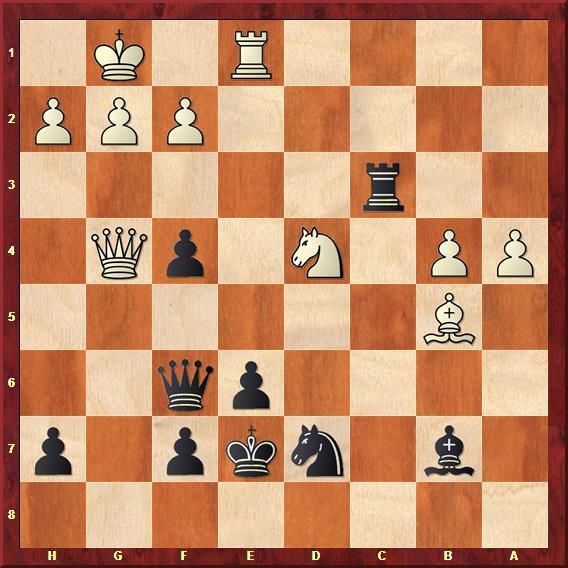
Analysis by Igor Stohl:
[Site "Bonn"]
[Date "2008.10.20"]
[Round "5"]
[White "Kramnik, Vladimir"]
[Black "Anand, Viswanathan"]
[Result "0-1"]
[ECO "D49"]
[WhiteElo "2772"]
[BlackElo "2783"]
[Annotator "Stohl,I"]
[SetUp "1"]
[FEN "8/1b1nkp1p/4pq2/1B6/PP1p1pQ1/2r2N2/5PPP/4R1K1 w - - 0 29"]
[PlyCount "14"]
[EventDate "2008.10.14"]
[EventRounds "11"]
[EventCountry "GER"]
[Source "ChessBase"]
[SourceDate "2008.11.13"]
text-move is an unforced and decisive tactical miscalculation.} (29. Bxd7 Kxd7
30. Nd2 Qg6 $15) (29. Nd2 $5 $13 {still leads to a murky position and the
outcome of the game remains open.}) 29... Qxd4 30. Rd1 Nf6 31. Rxd4 Nxg4 32.
Rd7+ Kf6 33. Rxb7 Rc1+ 34. Bf1 Ne3 $1 $19 35. fxe3 (35. h3 Rxf1+ 36. Kh2 Rxf2
$19) 35... fxe3 (35... fxe3 {/\e2} 36. Rc7 $8 Rxc7 37. g3 Rc1 38. Kg2 Rc2+ 39.
Kf3 Rf2+ $19 {a Black remains a whole R up.}) 0-1



The start of the match was delayed by a day due to air travel disruptions caused by the volcanic ash emissions from Eyjafjallajökull. Anand was to fly from Frankfurt to Sofia on 16 April 2010 but was stranded because of the eruption. He asked for a three-day postponement, which was refused by the organisers on 19 April.
Anand finally reached Sofia on 20 April, after a 40-hour road journey, which by the way, he and Team Anand spent by watching the Lord of the Rings trilogy. The first game was consequently delayed by one day.

Analysis by Mihail Marin:
[Site "Sofia"]
[Date "2010.04.28"]
[Round "4"]
[White "Anand, Viswanathan"]
[Black "Topalov, Veselin"]
[Result "1-0"]
[ECO "E04"]
[WhiteElo "2787"]
[BlackElo "2805"]
[Annotator "Marin,M"]
[SetUp "1"]
[FEN "r4rk1/q4pp1/n1bNp2p/p7/pn2P3/4N1P1/1P1Q1PBP/2RR2K1 w - - 0 22"]
[PlyCount "21"]
[EventDate "2010.04.24"]
[EventRounds "12"]
[EventCountry "BUL"]
[Source "ChessBase"]
[SourceDate "2010.05.18"]
Qe7 27. Rc4 $40 {With his e6-pawn weak and Rh4 coming, Black is in deep
trouble.}) ({Speelman} 22... Nc5 23. Rc4 $1 $16 (23. Nxh6+ $6 gxh6 24. Qxh6
Ncd3 $132)) 23. Nxh6+ $1 $18 gxh6 24. Qxh6 f6 (24... Qe7 25. e5 Bxg2 26. Rd4
$18) 25. e5 $1 Bxg2 26. exf6 Rxd6 (26... Bf3 27. Qg6+ Kh8 28. f7 $18) (26...
Qh7 {can be met by} 27. Qg5+ Kh8 28. Rc4 {threatening Rh4, when} Rg8 29. Nf7+
$1 {leads to mate.}) 27. Rxd6 Be4 (27... Bd5 28. Qg6+ Kh8 29. Rc4 Bxc4 30. Rd4
$18 {In this line, White has preserved precisely the necessary amount of
pieces for a win. Black cannot prevent mate on h7 or g7 at the same time.}) 28.
Rxe6 Nd3 29. Rc2 Qh7 30. f7+ $5 Qxf7 (30... Rxf7 31. Re8+ {leads to mate.}) 31.
Rxe4 {The material balance is more or less even, but Black's king remains
desperately weak and the general coordination is very poor.} Qf5 (31... Nxf2
32. Rf4) 32. Re7 1-0
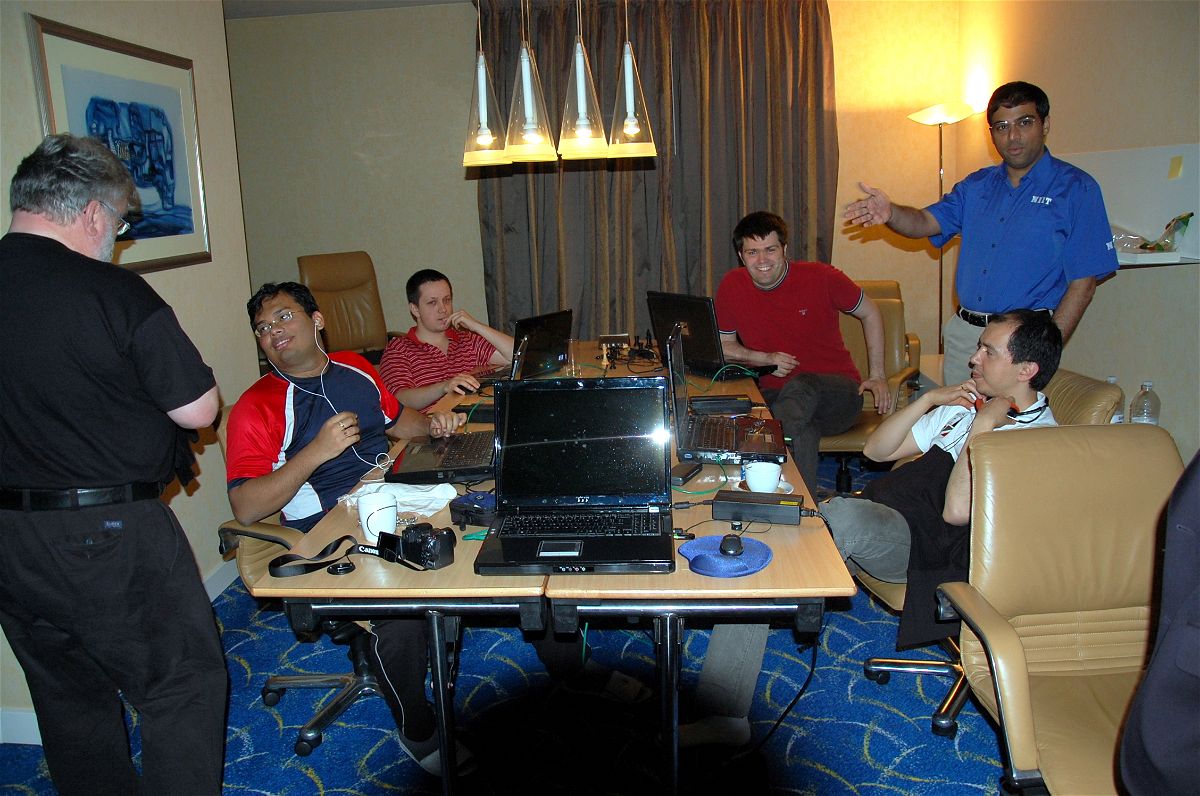
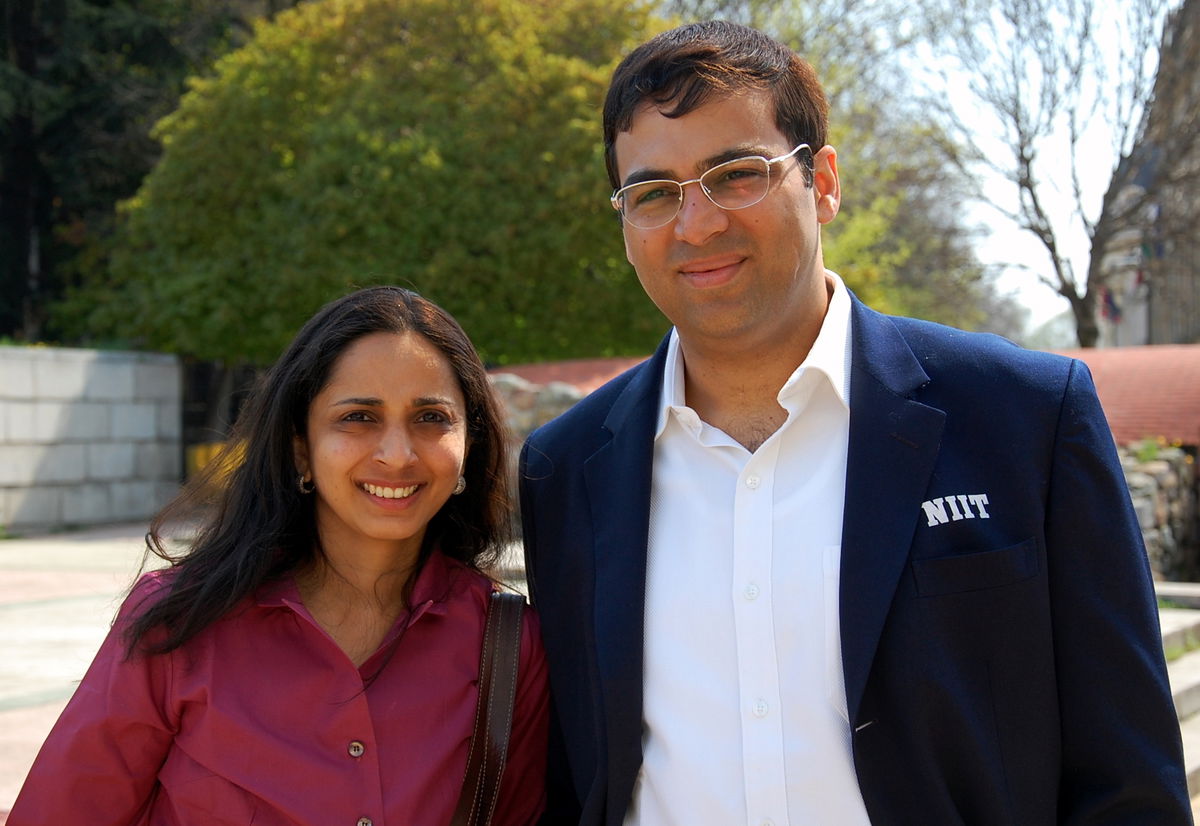


The year 2013 began on a happy note for Vishy, as he played possibly the greatest game of his life. (Personally, I prefer the Karjakin one, because he found the whole thing over the board). This one was actually prepared for Gelfand, as Anand candidly admitted at a chat show at the inauguration of the first edition of the Maharashtra Chess League in Pune.
Soon, Vishy was out of his preparation, and he created this:

Complete game analysed by Vishy Anand:
[Site "Wijk aan Zee"]
[Date "2013.01.15"]
[Round "4"]
[White "Aronian, Levon"]
[Black "Anand, Viswanathan"]
[Result "0-1"]
[ECO "D46"]
[WhiteElo "2802"]
[BlackElo "2772"]
[Annotator "Anand,V"]
[PlyCount "46"]
[EventDate "2013.01.12"]
[EventType "tourn"]
[EventRounds "13"]
[EventCountry "NED"]
[EventCategory "20"]
[Source "ChessBase"]
[SourceDate "2013.03.14"]
which made a perfect start for the New Year. Dies war in der 4. Runde. Gerade
am Vortag hatte Fabiano Caruna geschlagen, was einen perfekten Start für das
neue Jahr abgab.} 1. d4 d5 2. c4 c6 {We went for the Slav Defence, which was
no big surprise. We played this many time before, with reversed colours as
well. Wir wählten die Slawische Verteidigung, was keine große Überraschung war.
So haben wir viele Male zuvor gespielt, auch mit umgekehrten Farben.} 3. Nf3
Nf6 4. Nc3 e6 5. e3 {He goes e3 actually more often, but recently he has been
playing Bg5 a bit. Er wählt häufiger e3, aber in letzter Zeit hat er auch ein
wenig Bg5 gespielt.} Nbd7 6. Bd3 dxc4 7. Bxc4 b5 8. Bd3 Bd6 {I went for 8...
Bd6, already one idea was exactly what happened in the game. I wanted to see
if he would give me a chance to play 11...Rc8. Ich wählte 8...Bd6, eine Idee
war bereits genau das, was in der Partie passiert. Ich wollte sehen, ob er mir
die Chance geben würde, 11...Rc8 zu spielen.} 9. O-O O-O 10. Qc2 Bb7 11. a3 Rc8
{This is actually an amazing move. Dies ist in der Tat ein erstaunlicher Zug.}
({It used to be that everyone played automatically, in order to play c5,
Früher war es so, dass jedermann, um c5 zu spielen, automatisch} 11... a6 {
and then recently I noticed some games with 11...Rc8. zog, und dann fielen mir
kürzlich ein ein paar Partien 11...Rc8 auf.}) ({Let's imagine the position of
the game line after Vergegenwärtigen wir uns die Stellung des Partieabspiels
nach} 11... a6 12. Ng5 Bxh2+ 13. Kxh2 Ng4+ 14. Kg1 Qxg5 15. f3 {0-1 (53) Anand,
V (2791)-Aronian,L (2750) Linares 2009. There are many games played with this.
White has good compensation with the pair of bishops and the weak dark squares
in return of the extra pawn. In fact I lost a game to Aronian in 2009, though
I was winning. But I managed to confuse myself: Damit wurden viele Partien
gespielt. Für den Mehrbauern hat Weiß gute Kompensation mit dem Läuferpaar und
den schwachen dunklen Feldern. Tatsächlich verlor ich im Jahr 2009 gegen
Aronian, obwohl ich auf Gewinn stand. Aber ich schaffte es, mich selbst zu
verwirren:}) 12. Ng5 {This is the typical reaction and a very logical move.
Dies ist die typische Reaktion und ein ganz logischer Zug.} ({Already one
point of 11...Rc8 was shown in a game between Topalov and Kasimdhanov, a few
months back, where after Eine Pointe von 11...Rc8 wurde bereits in einer
Partie zwischen Topalov und Kasimdhanov gezeigt, ein paar Monate zuvor, wo nach
} 12. b4 {Black played Schwarz trotzdem} c5 {anyway. It's interesting: In the
whole line Black wants to play c5 without even bothering to protect the
b5-pawn. So there is an implied pawn sacrifice in every one of these moves.
spielte: Es ist interessant: In dem ganzen Abspiel will Schwarz c5 durchsetzen,
ohne sich um die Deckung des b5-Bauern überhaupt zu kümmern. Jeder dieser Züge
beinhaltet somit ein Bauernopfer.} 13. bxc5 Bxf3 14. gxf3 Nxc5 15. dxc5 Rxc5
16. f4 Nd5 17. Bb2 Nxc3 18. Bxc3 Qc7 19. Rfc1 Rc8 20. Bxh7+ Kh8 21. Bd3 Rxc3
22. Qxc3 Qxc3 23. Rxc3 Rxc3 24. Bxb5 Bxa3 25. Kg2 g6 26. Rd1 Rc7 27. Rd7 Rxd7
28. Bxd7 Kg7 29. e4 Kf6 30. Kf3 a5 31. e5+ Ke7 32. Ba4 Bc5 33. h3 Bb6 34. Bb5
Bc5 35. Ba4 Bb6 36. Bb5 Bc5 37. Ba4 {1/2-1/2 (37) Topalov,V (2752)
-Kasimdzhanov,R (2684) London 2012}) {Our big point, which we found while
preparing for the match against Gelfand, was the move Unser großer Wurf, den
wir bei der Vorbereitung auf das Match gegen Gelfand fanden, war der Zug} 12...
c5 $1 {So it looks like that for almost all what White does, Black can just
play c5. So the advantage of 11...Rc8 is that for the next move you have no
difficulty remembering... Es sieht also so aus, dass bei nahezu allem, was
Weiß tut, Schwarz einfach c5 spielen kann. Der Vorteil von 11...Rc8 liegt ergo
darin, dass man für den nächsten Zug keine Schwierigkeiten hat, sich zu
erinnern...} ({After 11...Rc8 12.Ng5 looks even stronger then after 11...a6,
because if you play Nach 11...Rc8 seiht 12.Ng5 sogar noch stärker aus als nach
11...a6, denn wenn man} 12... Bxh2+ 13. Kxh2 Ng4+ 14. Kg1 Qxg5 {then the R on
c8 is worse than the pawn on a6. spielt, dann steht der R auf c8 schlechter
als der Bauer auf a6.}) {He went Er zog.} 13. Nxh7 ({instead of statt} 13.
Bxh7+ {I give one variation, just to illustrate the thing: Ich gebe eine
Variante an, nur um die Sache zu illustrieren:} Kh8 14. Be4 Nxe4 15. Ngxe4 Bb8
$44 {and in fact, ...Qh4 is coming and the Rc8 and the black bishops are
perfectly placed. und dann steht ...Qh4 ins Haus, und der Rc8 und die
schwarzen Läufer sind perfekt platziert.}) {and I went , und ich wählte} 13...
Ng4 {This is the first point: Instead of taking the knight on h7, Black simply
moves his own. Dies ist die erste Pointe: Statt den Springer auf h7 zu
schlagen, bewegt Schwarz einfach seinen eigenen.} 14. f4 {Levon was very much
finding the way at the board. So he decided to go f4 instead of h3, which has
to be said is a little bit safer. Levon fand den Weg praktisch am Brett.
Deshalb entschied er sich für f4 statt h3, was zugegebenermaßen ein bisschen
sicherer ist.} ({I give a variation with Ich führe eine Variante mit} 14. h3 {
This line is self evident and in fact if you analyse with the computer a
little bit, it will show all the direct lines. an. Diese spricht für sich, und
wenn man ein bisschen mit dem Computer analysiert, wird dieser all die
direkten Abspiele zeigen.} Bh2+ $1 15. Kh1 Qh4 16. Be4 (16. d5 Rfd8 $44) 16...
Bxe4 17. Qxe4 f5 18. Qxe6+ Kxh7 19. Qxd7 cxd4 20. exd4 Bb8 21. Kg1 Bh2+ 22. Kh1
$11 {The main line ends in a draw, which is quite satisfactory from Black's
point of view. Das Hauptabspiel endet mit Remis, was aus der Sicht von Schwarz
völlig zufriedenstellend ist.}) 14... cxd4 15. exd4 {After this I actually
could not remember, what we had prepared. This was a bit of a problem, because
this is not the position where you could make a half move or a position that
plays itself. You have to make an exact move, because there is a rook hanging
on f8 and a lot of action. You have to do the right thing. And there are some
possibilities. I was considering moves like 15...e5, 15...Nde5, 15...Qh4, etc.
But none of them made a lot of sense. And then I got the key. Though I could't
remember the variations, I rememberd that in some lines my knight gets to d3.
So I mainly rembered the position where my knight gets to d3 and from this I
managed to reconstruct and find this move ...Bc5. Hiernach konnte ich mich
tatsächlich nicht mehr daran erinnern, was wir vorbereitet hatten. Das war ein
gewisses Problem, denn dies ist keine Stellung, wo man einen Halbzug machen
kann oder sich die Position von selbst spielt. Man muss einen genauen Zug
machen, da auf f8 ein Turm hängt und eine Menge los ist. Man muss das Richtige
tun. Und es gibt einige Möglichkeiten. Ich erwog Züge wie 15...e5, 15...Nde5,
15...Qh4 usw. Aber keiner davon war besonders sinnvoll. Und dann bekam ich
den Schlüssel. Obwohl ich mich nicht an die Varianten erinnern konnte, wusste
ich noch, dass in einigen Abspielen mein Springer nach d3 kommt. Also
erinnerte mich also hauptsächlich an die Stellung, wo mein Springer nach d3
kommt, und daraufhin gelang es mir, die Sache zu rekonstruieren und diesen Zug
...Bc5 zu finden.} ({I remembered the line Ich erinnerte mich an das Abspiel}
15. Nxf8 Bxf8 16. h3 dxc3 17. hxg4 Nf6) 15... Bc5 $1 16. Be2 {I think this is
the real mistake. Ich glaube, dies ist der wirkliche Fehler.} ({I give a line,
which is fairly straight forward: Ich gebe ein Abspiel an, was ziemlich
geradlinig ist:} 16. dxc5 Nxc5 17. Nxf8 Nxd3 {Black is very, very comfortable
with the knight on d3, but it might be not enough. White might get some sort
of half playable position like the variation here: Schwarz steht sehr, sehr
bequem mit dem Springer auf d3, aber es ist vielleicht nicht genug sein. Weiß
könnte eine halbwegs spielbare Stellung bekommen, wie in der Variante hier:}
18. h3 Qd4+ 19. Kh1 Ndf2+ 20. Rxf2 Nxf2+ 21. Kh2 Kxf8 22. Qh7 Nd3 23. Qh8+ Ke7
24. Qh4+ f6 25. Qg3 Kf7 26. Be3 $11) {Again it took me a while, not too long,
but the essential idea was very clear. So I found Erneut brauchte ich eine
Weile, nicht allzu lang, aber die Kernidee war glasklar. Daher fand ich} 16...
Nde5 $3 {This is simply a brilliant move. So if there is a single move of
which I am really proud in this game, it is move 16. Dies ist einfach ein
brillanter Zug. Wenn es also einen Zug gibt, auf den ich in dieser Partie
wirklich stolz bin, dann ist es der 16.} ({Here I was thinking again: Hier
überlegte ich erneut:} 16... Bxd4+ 17. Kh1 Nxh2 (17... Nde5 18. fxe5) {but the
problem with that is , aber das Problem dabei ist} 18. Ng5 $1) 17. Bxg4 ({
Now, after Nach} 17. fxe5 {I have habe ich jetzt} Qxd4+ 18. Kh1 Qg1+ 19. Rxg1
Nf2#) 17... Bxd4+ 18. Kh1 Nxg4 {And here, the game which kept on coming to my
mind was the famous classic Rotlewi-Rubinstein. For me, it's just a classic. I
imagine for Gelfand also. He would have rememberd it effortlessly, first of
all he knows his classics and secondly it is Rubinstein. he is one of his big
heroes. Rubinstein's main point was to invade with both rooks, but except for
this it is very similar. Und hier war die Partie, die mir ständig in den Sinn
kam, der berühmte Klassiker Rotlewi-Rubinstein. Für mich ist es einfach ein
Klassiker. Ich vermute, für Gelfand auch. Er sich mühelos daran erinnern
können, erstens kennt er seine Klassiker, und zweitens ist Rubinstein einer
seiner großen Helden. Rubinsteins Hauptpointe war, mit beiden Türmen
einzudringen, aber davon abgesehen ist es ganz ähnlich.} 19. Nxf8 {Here the
alternatives were very clear. In fact, for the rest of the game, there is not
much commentary to give. I will just highlight one or two key things. Hier
waren die Alternativen ganz klar. Tatsächlich ist für den Rest der Partie kein
großer Kommentar mehr erforderlich. Ich werde lediglich ein oder zwei
Schlüsseldinge betonen.} (19. Ng5 f5 20. h3 Rf6 21. Nf3 Rh6 $19) 19... f5 $1 {
This move I like very much. Here, I didn't take much time, because the ideas
are very obvious. The queen is coming to h4, or it's going to f6, capturing
the knight and White really has never a defence. So this was also very easy.
Dieser Zug gefällt mir. Hier brauchte ich nicht viel Zeit, denn die Ideen sind
sehr offensichtlich. Die Dame kommt nach h4, oder sie geht nach f6, Schlagen
des Springers, und Weiß hat nie wirklich eine Verteidigung. Das war also
ziemlich einfach.} 20. Ng6 Qf6 21. h3 ({The only thing is, on Das Einzige ist,
auf} 21. Ne5 {you have to find muss man} Nxh2 $8 $19 {It's the only move, but
it wins. finden. Es ist der einzige Zug, aber er gewinnt.}) 21... Qxg6 {
The other thing is, though Black is attacking very slowly, Qf6, Qxg6, Qh5 and
so on, there is very little White can do, because of the power of my bishops
and the knight on g4. Die andere Sache ist, obwohl Schwarz sehr langsam
angreift, Qf6, Qxg6, Qh5 und so weiter, gibt es sehr wenig, was Weiß tun kann,
und zwar aufgrund der Kraft meiner Läufer und des Springers auf g4.} 22. Qe2
Qh5 23. Qd3 $2 {This loses immediately, but the alternative would not have
changed the result... Dies verliert sofort, aber die Alternative hätte das
Ergebnis nicht verändert...} ({There was an alternative here Es gab hier eine
Alternative:} 23. Rf3 Nf2+ 24. Kh2 (24. Rxf2 Qxh3+ 25. Kg1 Qxg2#) 24... Bxf3
25. Qxf3 Qxf3 26. gxf3 Bxc3 (26... Nd3 $19) 27. bxc3 Rxc3 $19) {After Nach}
23... Be3 {it finishes immediately. So, one of the best games of my life
obviously! Especially against a giant like Levon. I was very happy, it was a
rest day, very nice... fällt sofort der Vorhang. Also, eine der besten Partien
meines Lebens, offensichtlich! Zumal gegen einen Giganten wie Levon. Ich
freute mich sehr, es war ein Ruhetag, sehr schön...} 0-1
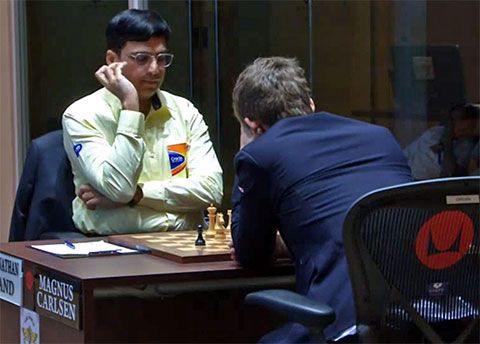
The 2013 Chennai World Championship resulted in a heartbreaking loss at the hands of his new arch-rival. Anand has fought and beaten the best of his rivals like Kramnik, Topalov, Gelfand, and many others, but in this battle of Youth vs. Experience, Anand went through the roughest patch of his career and was visibly short of delivering even his par performance.
Many saw this as a weakening of the maestro, wrote him off, and decided for him that it is time he retired. Many jumped ships, in favour of someone fitter and younger than him.

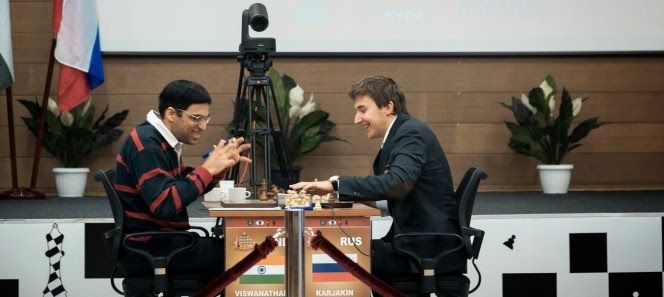
Anand dismantled his opposition at the 2014 Candidates Tournament at Khanty-Mansysk. This allowed him to challenge Carlsen for the world title once again, his third World Championship in three years! However, a sad counter-blunder in an evenly poised match left Carlsen as the champion once again.
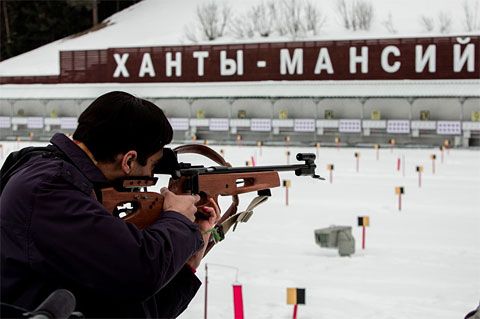
Vishy, you are simply the best, better than all the rest. Thank you for building such timeless monuments – your games.
Special thanks to V. Kameshwaran for all the clippings and images from Anand's childhood and Eric van Reem for capturing the moments during Anand's title defence
